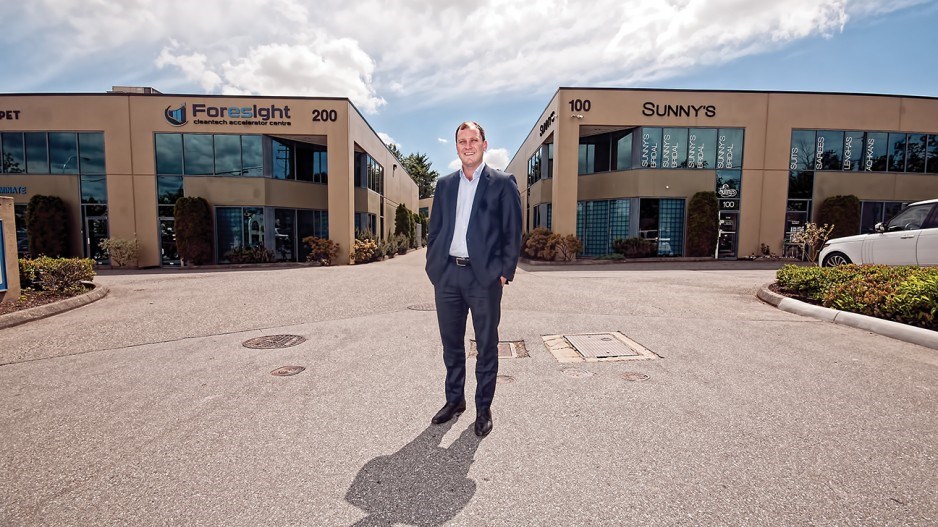With the land crunch in Metro Vancouver, developers of all stripes often look longingly across the Fraser River to the green fields of Surrey, Langley, Abbotsford and beyond for building sites. With some of the region’s most affordable housing, and land costs that make it economical for businesses that need large amounts of space to locate here, the region seems a field of dreams.
But the reality is that just 212 acres of readily developable industrial land exists in Abbotsford despite an industrial acreage of 2,069 acres; in Chilliwack, just 150 acres remains vacant in an inventory of 1,295 acres of zoned industrial land.
“A lot of groups have always said there’s a ton of land out in Abbotsford, Chilliwack, and that’s the release valve on our industrial land supply, but unfortunately that’s not the case,” said Garth White, a principal with Avison Young in Vancouver who specializes in Fraser Valley industrial sales and leasing.
Molson Coors recently broke ground on its new brewery in Chilliwack, but the 36-acre parcel next to Highway 1 was eligible thanks to special zoning allowing food and beverage processing within the Agricultural Land Reserve.
“That was one way we were able to get additional industrial land out a number of years ago,” explained Brian Coombes, president of Chilliwack Economic Partners Corp. “[But] you can’t just put anybody there.”
An adjacent parcel is home to Berryhill Foods Inc., but other wins for the city have steadily gobbled up its existing inventory, including a six-acre purchase by Pacific Coast Heavy Truck Group, the relocation of the Pacific Dairy Centre Ltd. on a 10-acre parcel and the expansion of Langley Concrete Group, which relocated to Chilliwack in 2006 after Langley rezoned its original site to light industrial.
“We’re fortunate to not be at a stage where we’re out of land, but definitely inventory is shrinking, just like everywhere, and that’s driving prices up,” Coombes said, underscoring the challenge facing Chilliwack as well as Abbotsford.
Both municipalities have seen an influx of residents in search of cheaper housing, with residential building permits hitting record levels, but the demand for industrial space that creates local job opportunities has been equally great.
“As we continue to grow the economic base here, more investment in Abbotsford, more investment in Chilliwack, it allows people to work closer to home,” Coombes said. “It’s about creating a complete community where you can live and work.”
This is a strategy Surrey has pursued, exploiting its industrial land base to add 12,800 jobs over the past decade. This means a greater proportion of residents work within the city now compared with 2006.
Recent industrial deals will mean about 350 jobs for Chilliwack, but without careful management of its land base, that growth could stall.
This is what has happened in Abbotsford, which used to be one of the region’s fastest-growing markets until the pace of deals in the past couple of years left little room for growth, said Chris MacCauley, a senior vice-president specializing in industrial space with CBRE Ltd.
“Abbotsford used to lead the Lower Mainland on vacancy because it was too far out there,” MacCauley said. “[Now] they have about a 0.5% vacancy, less than Vancouver. So even though they’ve got affordable housing out there, they don’t have the opportunities to provide the industrial jobs.”
The situation wasn’t for lack of foresight.
In 2004, Abbotsford identified the need for 1,300 acres of industrial land to accommodate future growth in user demand and job opportunities.
“If we don’t identify suitable land to fill that gap, then eventually we will be short again,” Jay Teichroeb, then Abbotsford’s economic development manager, said at the time.
Abbotsford asked the Agricultural Land Commission (ALC) for 925 acres, but the city received just 445 acres. Today the city has come full circle, Mayor Henry Braun said.
“At the absorption rate we’ve had in the last two years, we’re going to be out of serviced industrial land in about four to five years,” he said.
The city lost the Molson brewery to Chilliwack because it couldn’t provide a site large enough with the transportation links Molson wanted. A logistics company also passed over Abbotsford in favour of Alberta.
“They were looking for a million square feet of building space. They ended up going to Alberta because they couldn’t find it anywhere in the valley,” Braun said.
The city is now preparing to ask the ALC for an exclusion of 696 acres adjacent to Gloucester Industrial Estates and near Abbotsford International Airport in the hope of securing enough land to accommodate up to 31,000 jobs.
“The city has looked out over the horizon to over 200,000 people and said this is what we need,” Braun said.
Given the appetite for new industrial land, Braun acknowledges that “there’s no guarantee” that the exclusion request will be sufficient. However, local job growth demands a boost to the land supply.
“Our economy between Vancouver and Hope is going to suffer if we don’t find solutions,” he said.




